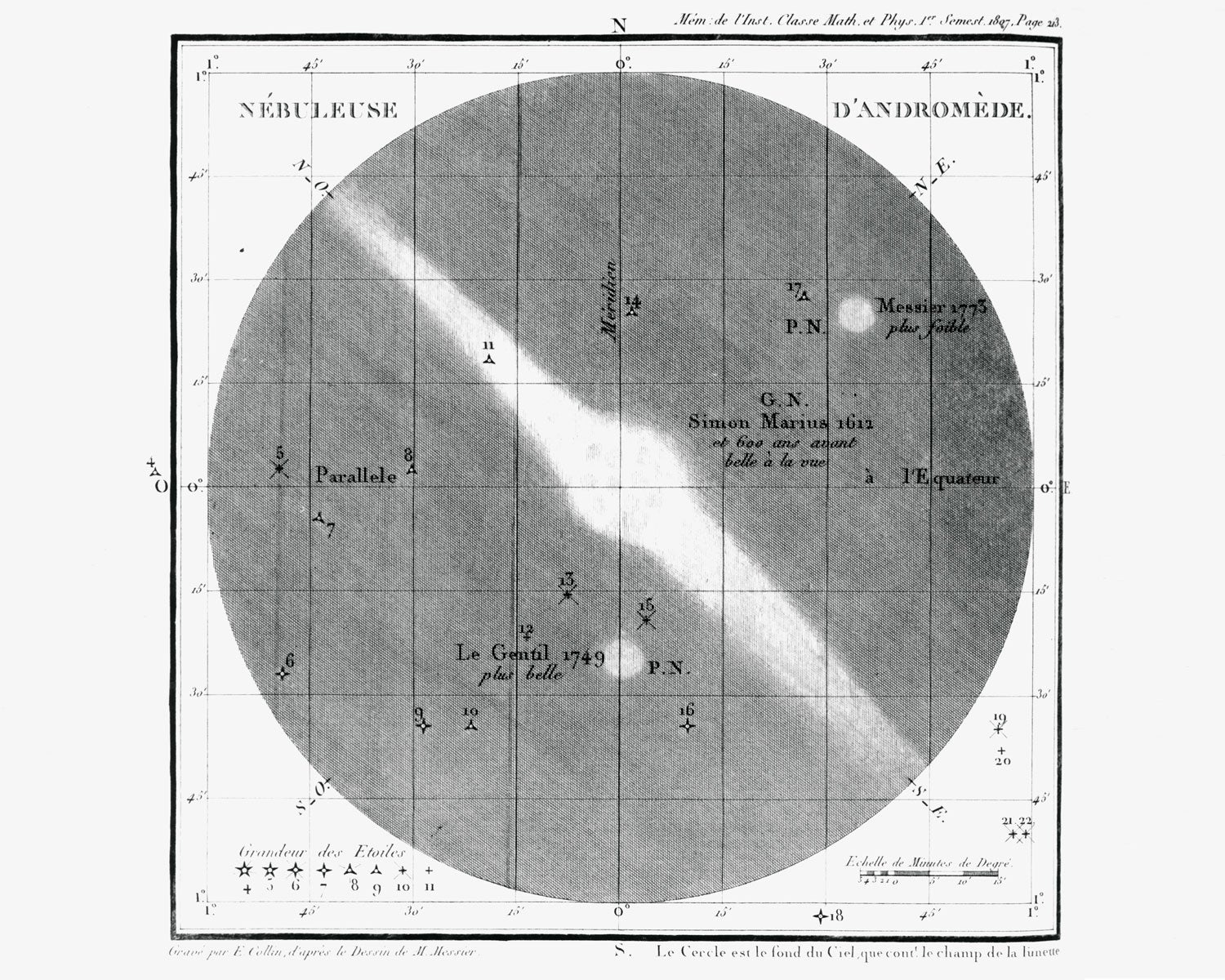
A serendipitous discovery
While hunting for comets in 1758, French astronomer Charles Messier observed a smudge in the sky, called it a nebula, and began cataloging others like it. He later spotted an assembly of smudges in the Virgo constellation — the first galaxy cluster. Astronomers realized over time that few galaxies were alone in space, including Andromeda, illustrated here with two companion galaxies, M32 and M110. By the 1960s they had systematically surveyed the skies and identified 10,000 galaxy clusters.
Credit: ROYAL ASTRONOMICAL SOCIETY/SCIENCE PHOTO LIBRARYFirst glimpses of the X-ray universe
In the 1960s astronomers began exploring galaxy clusters with a new tool: x-ray telescopes mounted on orbiting satellites. These telescopes spotted only the hottest and most energetic objects, offering a whole new view of the universe. By observing galaxy clusters like Abell 2029 (shown here in optical and x-ray images), astronomers were surprised to see that galaxy clusters were filled with gas thousands of times hotter than the surface of the sun.
Credit: X-ray: NASA/CXC/UCI/A.Lewis et al. Optical: Pal.Obs. DSS
The case of the missing stars
The gas in these galaxy clusters was far too hot to form stars, and astrophysicist Andrew Fabian of the University of Cambridge wondered why. Based on x-ray emissions from the Perseus galaxy, he calculated that the gas should have cooled enough through the eons to form billions of stars. But it had remained blazing hot, and there were no stars to be found.
Watch Andrew Fabian discuss the importance of encouraging curiosity. Credit: Sam FabianBlack holes and hot sounds
X-ray images of gas in the Perseus cluster suggested why it remained so fiery. The gas contained two vast bubbles that were centered on the central galaxy of the cluster (NGC 1275) like bulbs of an hourglass. The axis of the hourglass aligned with the two luminous jets that shot vast distances from NGC 1275. Fabian proposed that the supermassive black hole that anchors NGC 1275¬ drives the jets, which blow the bubbles, which create sound waves that push outward and heat the gas.
Credit: Wojtek Urbanek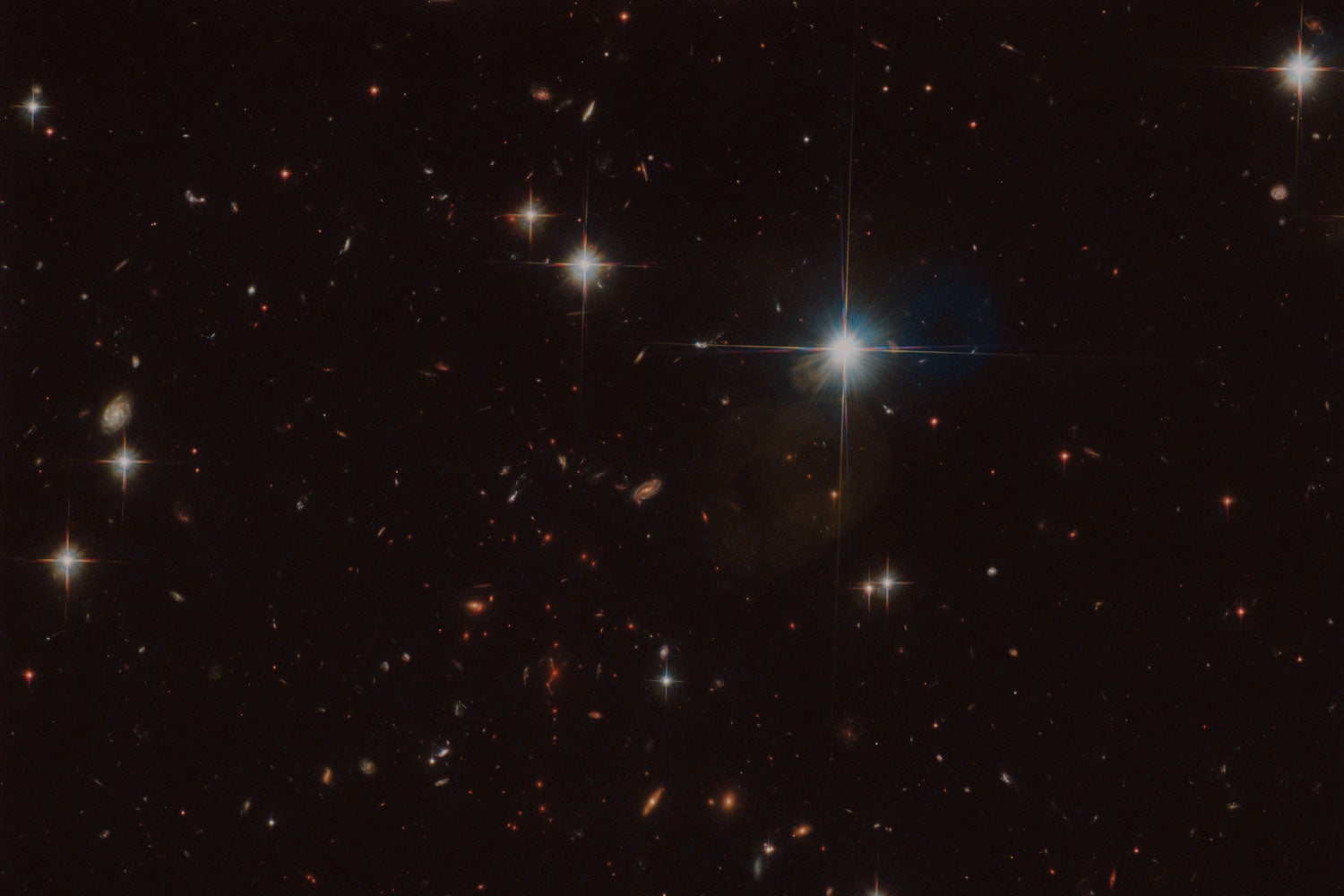
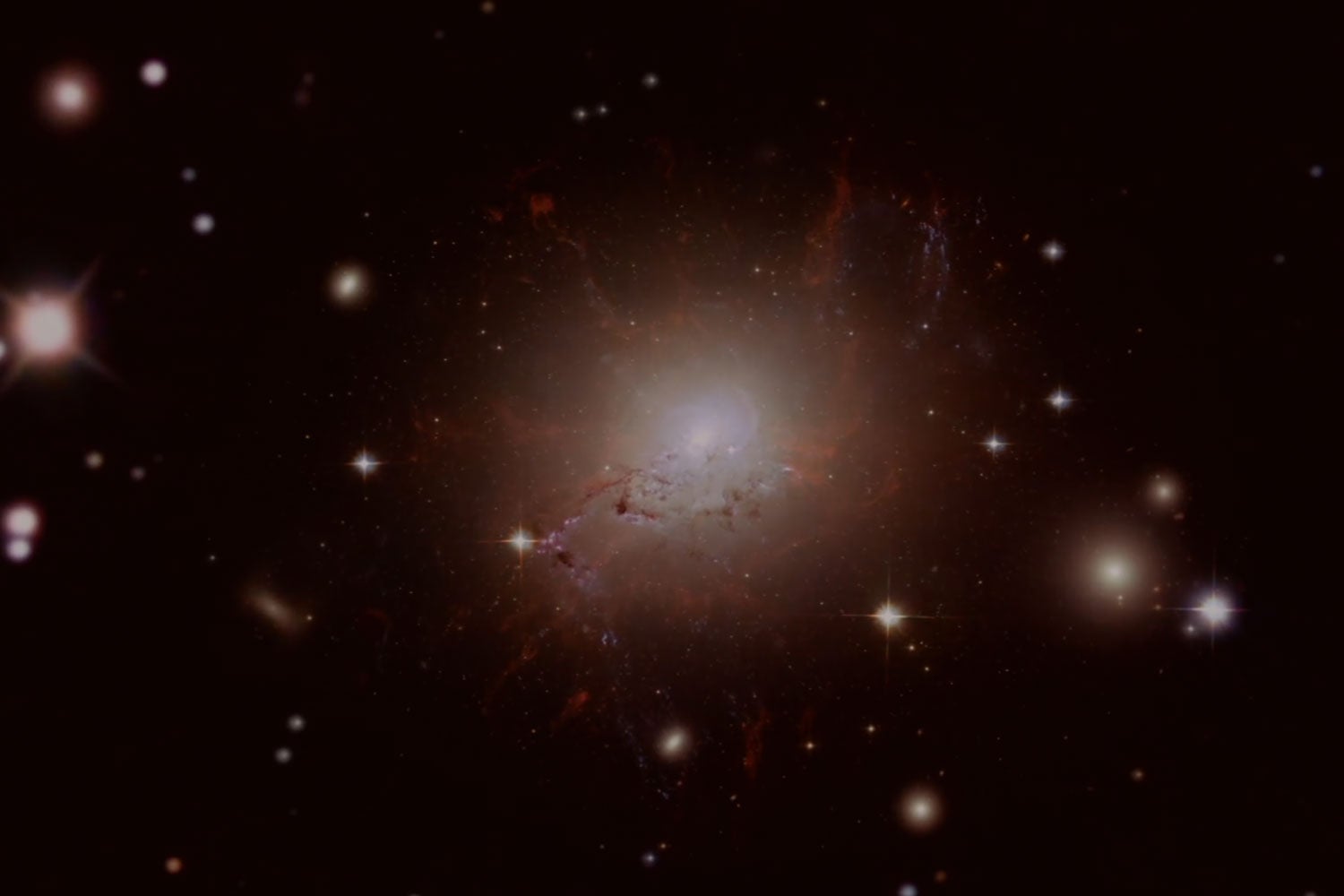
Galactic blowback
Press play to explore an interactive 3-D model that shows how a black hole in the center of a galaxy cluster can shape the fate of galaxies. Click on annotations to see what creates the deepest sound in the universe.The mysterious physics of plasma jets
As a supermassive black hole spins, its powerful gravity distorts the very fabric of space-time. This distorts a magnetic field, also produced by the spinning black hole. Computer modeling (shown) by astrophysicist Kyle Parfrey and colleagues suggests that the magnetic field functions as a giant particle accelerator that powers the titanic plasma jets. The Event Horizon telescope—a global network of radio telescopes—could help astrophysicists test this hypothesis.
Credit: K. Parfrey et al./Physical Review Letters 2019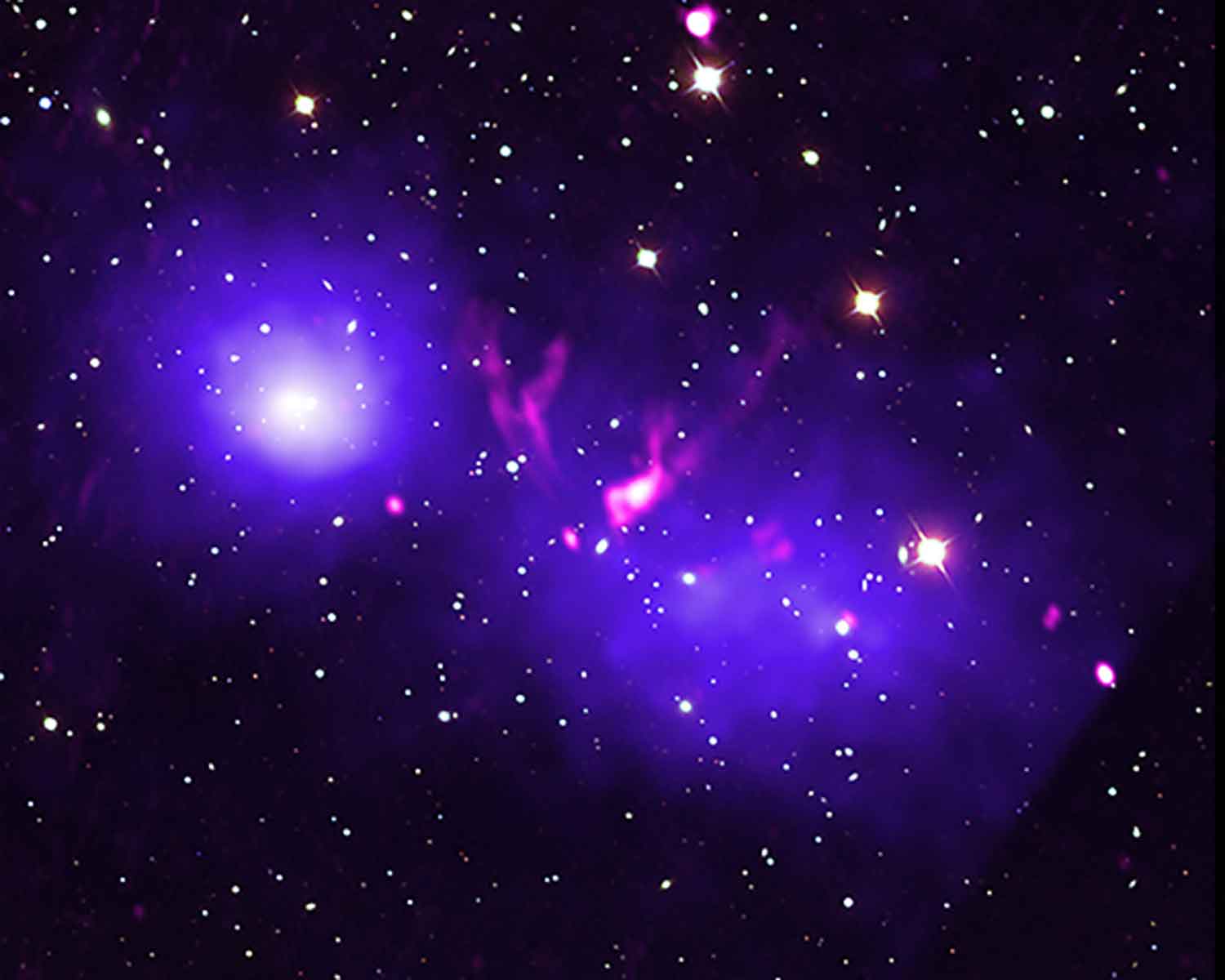
When galaxy clusters collide
Galaxy clusters grow through collisions, which take about a billion years. Last year Liyi Gu of the RIKEN High Energy Astrophysics Laboratory and colleagues used x-ray, optical and radio telescopes to spot two clusters about to merge. Computer modeling revealed sonic-boom-like shock waves and a huge hot belt of 100 million-degree gas at the collision site. Scientists hope that snapshots of other merging clusters captured by eROSITA, an x-ray all-sky survey launched last year, will yield new insights into the large-scale structure of the universe.
Credit: X-ray: NASA/CXC/RIKEN/L. Gu et al; Radio: NCRA/TIFR/GMRT; Optical: SDSS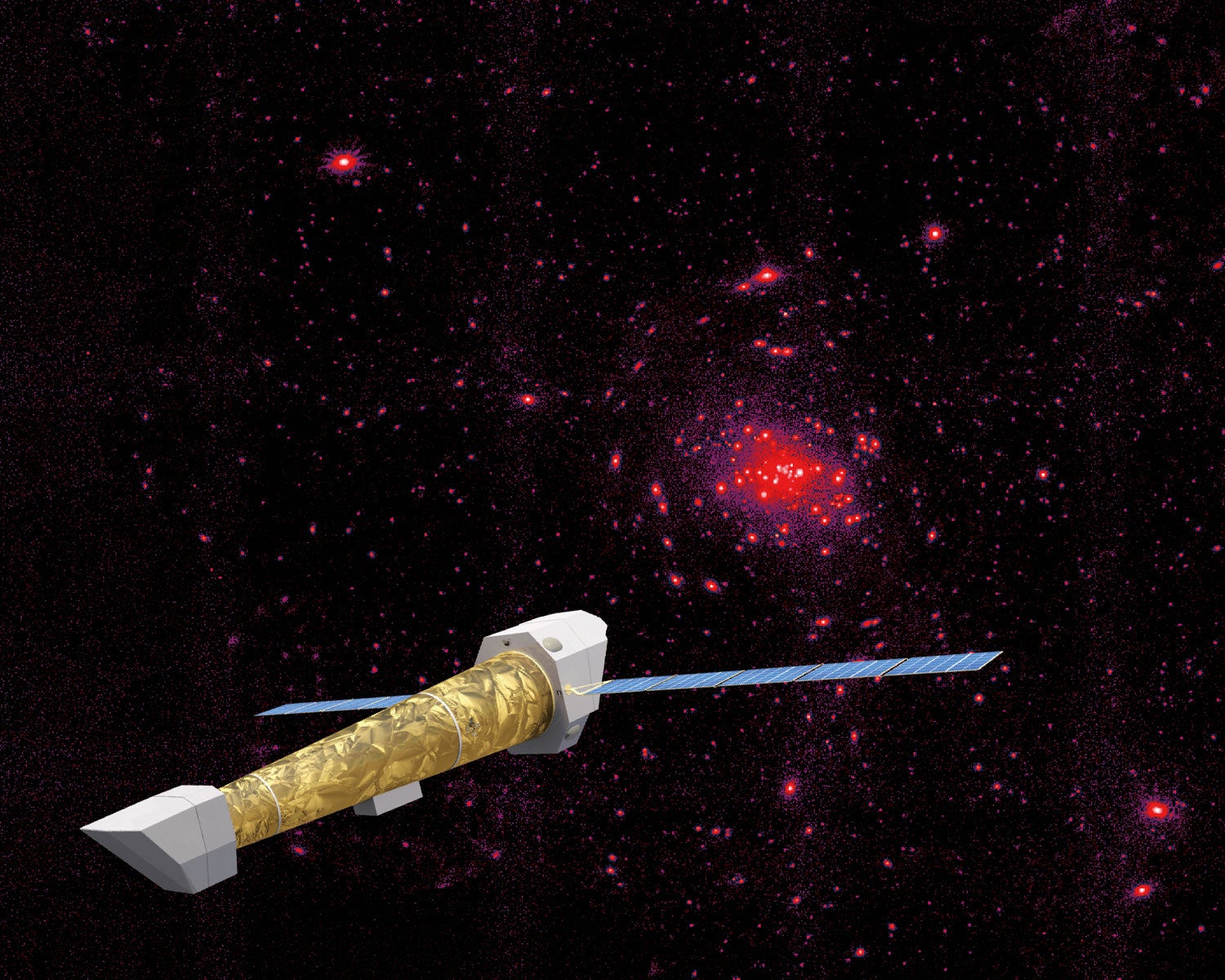
Why black holes anchor galaxies
All massive galaxies have a central black hole, but scientists don’t know when or how they got there. To learn, they’ll need to look at extremely distant — and faint — clusters to observe events from billions of years ago, when those clusters were young. That will take much larger x-ray telescopes, like the Athena satellite (shown in this artist’s view), which Fabian is designing with the European Space Agency to launch in 2031.
Credit: N. Vulic/IRAP, CNES, ESA &ACO Team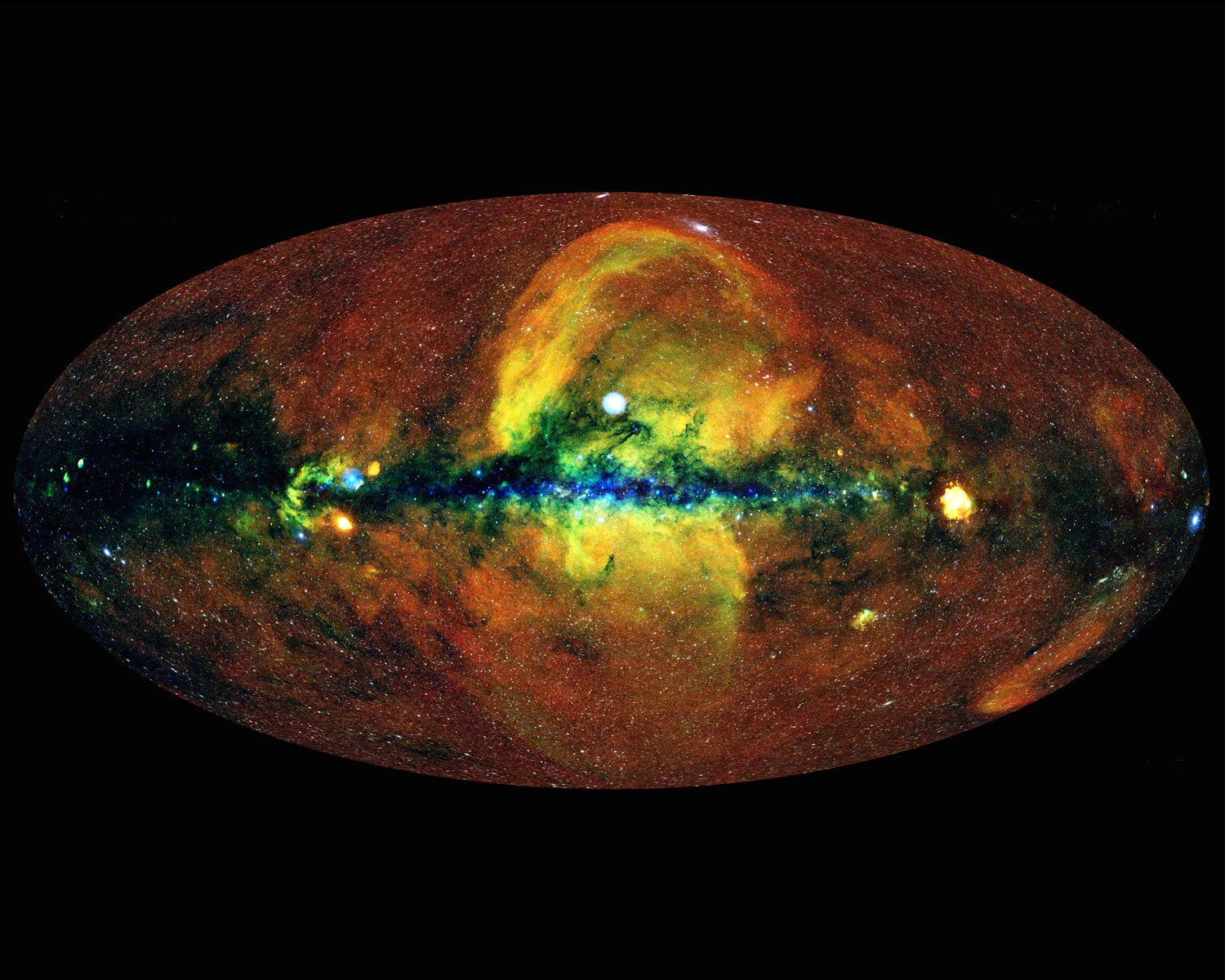
Emerging mysteries of the high-energy universe
After a half century of x-ray astronomy, we have more data than answers, and even more data lie just ahead. eROSITA’s first whole-sky scan revealed more than one million x-ray sources, including 100,000 galaxy clusters, active galactic nuclei, and black holes swallowing stars. But they also included x-ray bursts from unknown sources, which astronomers will no doubt be studying for decades to come.
Credit: Jeremy Sanders, Hermann Brunner & eSASS team (MPE); Eugene Churazov, Marat Gilfanov (IKI)





